
Asset Finance Specialists
Asset finance enables businesses to acquire plant, machinery, equipment, vehicles, and technology by paying for the assets in instalments rather than all upfront.
Our Asset Finance service
We arrange finance leasing for high-value assets across a range of industries.
- Plant and equipment with everything from server racks and warehouse automation to cranes.
- Factory machinery, including robotics, to production line machinery.
- Commercial vehicles, large & small, from a single van to a fleet of HGVs.
- Executive company car fleets with market-leading rates.
- Available to companies in & England, Scotland, Wales and Northern Ireland.
Examples of Asset Finance
Finance is available for many types of assets, enabling businesses to spread the acquisition cost over time. Typical examples include:
- Vehicles and Fleets
- Machinery and Equipment
- Robotic Automation
- Technology and IT Equipment
- Office Furniture and Equipment
- Healthcare Equipment
- Aircraft and Marine Vessels
- Renewable Energy Systems
- Hospitality and Retail Equipment
- Fitness and Recreational Equipment
- Soft Assets
Our Asset Finance Options
- Hire Purchase
- Hire Purchase with Balloon Payment
(Business Contract Purchase) - Finance Lease
- Operating Lease
- Residual Value-Based Lease (RVBL)
The Benefits of Asset Finance for Your Business
Asset Finance can bring tangible benefits to any business that needs to access a new asset but doesn't want to use its cash reserves. Here are the top 7 reasons why companies use it.
- Maintain cash flow
- Access to tax relief
- Acquire assets quickly
- Gain flexibility to upgrade or replace assets
- Risk protection against fluctuations in asset prices
- Affordable payment terms
- Protect lines of credit and cash reserves

2024 Asset Finance Guide
Asset Finance (Asset Leasing) enables access to necessary equipment such as machinery, vehicles, or technology without the burden of upfront costs for a business. By spreading payments over a set period, companies can enjoy immediate access to essential assets, enhancing their operational capabilities efficiently.
Our guide explains Asset Finance, covering its various forms—Hire Purchase, Hire Purchase with Balloon Payment (Business Contract Purchase), Finance Lease, Operating Lease (Contract Hire) and Residual Value-Based Leasing (RVBL)—each tailored to suit different business needs and financial strategies. Through detailed explanations, we'll cover how these financing options work, their benefits, and the types of assets you can finance, providing a comprehensive guide to understanding and leveraging Asset Finance for your business growth.
Contents

What is Asset Finance?
Asset finance, also known as Asset leasing, is a financial arrangement where a business (lessee) pays to use an asset owned by a finance company (lessor) for an agreed period (term).
At the end of the lease term, the business typically has three options, depending on the type of lease. Return the Asset, Extend the Lease or Purchase the Asset. Its flexible funding option enables businesses to access essential equipment, such as machinery, vehicles, or plant, by spreading payments over time instead of a significant upfront cost. This approach facilitates quicker asset access and spreads the asset's cost to the company over time. Asset finance comes in five forms: hire purchase, hire purchase with a balloon payment (business contract purchase), finance lease, operating lease (contract hire), and residual value-based lease.
Hire Purchase, Hire Purchase with Balloon Payment (Business Contract Purchase), Finance Lease, Operating Lease, and Residual Value-Based Lease are all types of asset finance that allow businesses to acquire equipment or vehicles. Hire Purchase involves making regular payments on an asset until the total price is paid off, transferring ownership to the business. Hire Purchase with Balloon Payment or Business Contract Purchase is similar but includes a larger final payment, reducing the regular instalments and offering the option to return the asset instead of making the final payment. A Finance Lease allows a business to use an asset for a fixed period while paying rent for it, with the option to pay the residual value at the end and purchase the asset, extend the lease, or return it. Operating Lease or Contract Hire is a rental agreement for using the asset for a predetermined period, after which it is returned to the lessor, ideal for businesses looking for short-term use without the commitment of ownership.

8 Benefits of Asset Finance
- Allows businesses to acquire assets without using their cash.
- Helps maintain cash flow.
- Gives businesses access to tax relief.
- Helps businesses acquire assets more quickly.
- Affords businesses the flexibility to upgrade or replace assets when needed.
- Offers risk protection against fluctuations in asset prices.
- Offers affordable payment terms.
- Helps protect lines of credit and cash reserves.

How does Asset Finance work?
Here's how Asset Finance typically works:
Selection of Asset. The business identifies the equipment or assets it needs from a supplier.
Lease Agreement. The finance company purchases the asset and then leases it to the business under a lease agreement. This agreement outlines terms, including lease duration, payment schedule, and any end-of-lease options.
Lease Payments. The business makes regular lease payments to the finance company to use the asset. These payments are often fixed and spread over the lease term, making budgeting easier.
Use of Asset. The business fully uses the asset during the lease term, although the finance company retains ownership. The lease agreement may specify conditions regarding the maintenance and insurance of the asset.
End of Lease Options. At the end of the lease term, the business typically has several options, depending on the type of lease:
- Return the Asset. The business can return the asset to the finance company.
- Extend the Lease. The lease may be extended, allowing continued asset use.
- Purchase the Asset. For some leases, like a finance lease, the business may have the option to purchase the asset at a residual value.
Types of Leases: The specific terms and options available can vary significantly depending on whether it is a Hire Purchase, Hire Purchase with Balloon Payment (Business Contract Purchase), Finance Lease, Operating Lease (Contract Hire) or Residual Value Based Lease.
Operating Leases are short-term and flexible, allowing businesses to upgrade assets frequently without ownership.

What is Hire Purchase?
Hire Purchase is a financing arrangement that allows individuals or businesses to acquire an asset through a structured payment plan. Under this agreement, the purchaser pays an initial deposit and regular instalments over a specified period. Ownership of the asset is transferred from the seller to the buyer only after the final payment is made. Throughout the repayment period, the buyer has the use of the asset, but the seller retains legal ownership until all payments are completed, providing a secure form of credit. For example, a company looking to purchase a new company vehicle might opt for a Hire Purchase agreement. They could pay a 20% deposit on the vehicle's price and then cover the remaining balance through monthly payments over three years. Only after the last payment would the company officially own the vehicle, combining immediate use with a path to full ownership.
WHAT IS HIRE PURCHASE WITH BALLOON PAYMENT?
Hire Purchase with Balloon Payment, also known as Balloon Hire Purchase, is a variation of the traditional Hire Purchase financing. This arrangement involves a buyer making regular monthly payments for the use of an asset, similar to a standard Hire Purchase, but with a significant difference: a larger final payment, known as a "balloon" payment, is made at the end of the agreement. This balloon payment represents a portion of the asset's value. It is deferred until the end of the payment schedule, effectively reducing the amount of the regular monthly payments throughout the agreement term.
This financing option is particularly attractive for buyers who want lower monthly outgoings and are confident in making the large final payment, either from business cash flow or through a planned financing arrangement. It's commonly used in vehicle acquisitions, where the balloon payment is often calculated based on the projected residual value of the vehicle at the end of the agreement.
For example, a business might use Hire Purchase with Balloon Payment to acquire a new delivery van. They agree to a 4-year term, with monthly payments calculated on 75% of the van's value and a balloon payment covering the remaining 25% due at the end of the term. This setup allows the business to benefit from lower monthly costs, with the understanding that the larger sum will be due at the contract's conclusion. They might pay the balloon payment to gain full ownership, refinance the balloon amount, or sell the vehicle to cover the cost.
What is a Finance Lease?
A Finance Lease is a leasing arrangement where the lessee effectively assumes most of the risks and rewards of asset ownership without owning it until the end of the lease term. A finance lease involves making regular payments that cover the asset's total value, plus interest, over a fixed period. This lease typically spans a significant portion of the asset's useful life, and the lessee is responsible for maintenance, insurance, and taxes. At the end of the lease, the lessee usually has the option to purchase the asset at a residual value, extend the lease, or return the asset. Finance leases are recognised on the lessee's balance sheet, reflecting both the leased asset as an asset and the lease obligation as a liability.
What is an Operating Lease?
An Operating Lease, often called Contract Hire, is a leasing agreement that allows a business to use an asset for a short to medium term without assuming the risks and rewards of ownership. In an Operating Lease, the lessee pays a regular rental fee to the lessor for using the asset, which could be anything from vehicles, machinery, plant, or equipment. The lease term is typically shorter than the asset's economic life, and at the end of the lease period, the asset is returned to the lessor.
One key characteristic of an Operating Lease is that it is treated as an off-balance sheet financing, meaning the leased asset and associated liabilities do not appear on the lessee's balance sheet. This can make a company's financial position appear stronger, as its debt-to-equity ratio may be lower than if the assets were purchased or financed through a loan.
Operating Leases often include services such as maintenance, insurance, and repairs provided by the lessor, which can simplify asset management for the lessee. At the end of the lease term, the lessee can return the asset, extend the lease, or sometimes upgrade to a newer model, offering flexibility to adapt to changing business needs or technology advancements.
For example, an airline might use an Operating Lease to acquire an aircraft. This arrangement allows the airline to use the aircraft for a specific period, often 5-10 years, without bearing the total ownership costs, such as maintenance and depreciation. At the end of the lease, the airline can return the aircraft to the lessor, thereby avoiding the risk of obsolescence and the challenge of disposing of the asset.

What is A Residual Value-Based Lease?
A Residual Value-Based Lease (RVBL) is a leasing agreement primarily used to finance assets such as vehicles, machinery, and equipment. In this lease structure, the asset's residual value—the estimated asset's value at the end of the lease term—is considered when calculating the lease payments. This type of lease is common in the auto leasing industry but can be applied to other assets.
Initial Lease Calculation. At the beginning of the lease, the lessor (the entity providing the lease) estimates the asset's residual value at the end of the lease term. This estimation is based on the expected depreciation of the asset over the lease period.
Lower Monthly Payments. The lessee (the entity using the asset) pays for the use of the asset during the lease term, which is the difference between the asset's initial cost and its estimated residual value, plus interest or financing charges. This often results in lower monthly payments compared to traditional financing or leasing options, where the full value of the asset is amortized over the lease term.
End of Lease Options. At the end of the lease term, the lessee has several options, typically including returning the asset, purchasing the asset for its residual value, or extending the lease. The specific options available can vary based on the lease agreement.
RVBLs are particularly beneficial for lessees who prefer not to bear the full cost of asset depreciation or anticipate needing an asset only for a specific period. It also provides flexibility at the end of the lease term, allowing lessees to make decisions based on the current value and utility of the asset.
This leasing model carries a risk for the lessor, which is the risk of inaccurately estimating the asset's residual value. If the actual residual value at the end of the lease is lower than estimated, the lessor may incur a loss. Conversely, if the residual value is higher, the lessor may benefit from a higher return on the asset.
What is Asset-based Financing in Islamic Finance?
In Islamic asset finance, governed by Shariah (Islamic law), the principles forbid charging or paying interest, engaging in financial speculation, and investing in activities that negatively impact society. As a result, all financing within Islamic banking must be asset-based.
Any business operating under Shariah principles seeking to acquire vehicles or equipment or secure a loan against an existing asset will not incur interest charges. Instead, they pay a profit margin on the asset's value to the financier, who either provides the assets or the funds. The process requires the asset to be transferred to, through, or owned by the financier at some point.
For instance, consider a Shariah-compliant company needing new machinery. A financier purchases the equipment, adds a profit margin, and leases or lends it to the company. The company then repays the equipment cost plus the margin in regular instalments. While this might resemble conventional interest-based financing, the absence of an interest charge on the money's "time-use" for purchasing the equipment aligns it with Islamic law. This approach is consistent across all forms of asset financing. When a Shariah-compliant business wants to leverage its assets for cash, the financier temporarily assumes ownership of the asset, adds a margin, and then sells it back to the business. Assets play a pivotal role in Islamic financing.
Finance Lease Vs Operating Lease
The key differences between a Finance Lease and an Operating Lease lie in these agreements' structure, financial treatment, and end-of-lease options. Understanding these differences will help businesses make the right leasing decision based on their financial strategy, asset needs, and accounting considerations.
OWNERSHIP AND RISK
Finance Leases are often structured so that the lessee assumes many of the risks and rewards of ownership, even though legal title may not transfer until the end of the lease term. The lessee is responsible for maintenance, taxes, and insurance.
Operating Leases are structured so that the lessor retains the risks and rewards of ownership. Maintenance and other ownership responsibilities typically stay with the lessor, making it more of a rental agreement.
LEASE TERM
Finance Lease terms usually cover a significant portion of the asset's useful life, and the lessee is committed to keeping the asset for the duration of the lease.
Operating Lease terms are shorter relative to the asset's useful life, providing more flexibility to return the asset without penalty at the end of the lease.
FINANCIAL TREATMENT
Finance Leases are recognised on the lessee's balance sheet, showing the asset as a leased asset and the lease obligation as a liability. This increases the lessee's debt-to-equity ratio and other financial metrics, which may be unhelpful if the business seeks investment or a loan.
Operating leases were traditionally not included on the balance sheet, offering an off-balance-sheet financing option. However, accounting standards have evolved (e.g., IFRS 16 and ASC 842), requiring operating leases to be recognised on the balance sheet, though the specifics of recognition and impact can differ from finance leases.
PAYMENTS AND INTEREST
Finance Lease payments are typically higher than operating leases, as finance leases aim to cover the total value of the asset, including interest, over the lease term.
Operating Lease payments are lower, reflecting only the use of the asset during the lease term, not its total value.
END-OF-LEASE OPTIONS
Finance Leases offer the lessee the option to purchase the asset at the end of the lease for a residual value, extend the lease, or return the asset.
Operating Leases see the lessee return the asset to the lessor at the end of the lease term, with possibilities for lease extension or asset upgrade in some cases.
What is Short-term Asset Financing?
Short-term asset finance is either a short-term loan under 12 months that provides a company with cash against its assets as collateral, or it can be a lease for equipment that the company requires for a short duration, typically less than a year.
Use Cases for each type of Asset Finance
Finance Leases are suited for businesses looking to eventually own or use the asset for its entire useful life.
Operating Leases are ideal for businesses seeking temporary use of an asset or looking to upgrade assets frequently without the burden of ownership.
In summary, choosing between a finance lease and an operating lease depends on the lessee’s long-term asset needs, financial strategy, and the desired balance sheet impact.

What assets can you finance?
Finance can be obtained for various assets, allowing businesses and individuals to spread the acquisition cost over time.
The type of assets you can finance are typically high-value and fall into several categories, such as:
Vehicle and Fleet Finance
Car finance, truck finance, pickup truck finance, van finance, HGV finance and commercial vehicle finance are the financing of single vehicles with options like Vehicle Hire Purchase, Finance Lease, or Operating Lease agreements. When a company finances a batch acquisition of vehicles, this is called Fleet finance. The term fleet finance is typically reserved for ten or more vehicles being financed for a business.

Machinery and Equipment Finance
CNC, embroidery, and manufacturing machines for production, heavy plant machines such as yellow plant include forklift finance, dumpers, excavators, loaders, bulldozers, and cranes for construction or mining. Tractor finance, Combine Harvesters, All-Terrain Vehicles (ATVs) for agriculture, and other heavy equipment are necessary for various industries.

Robotic Automation Finance
Robotics, Droids and Drones for Material Handling, Picking, Packing, Palletising, Part Transfers, Machine Loading, Assembly, Welding, Painting, Dispensing and Processing for warehouses, distribution centres, and production lines.
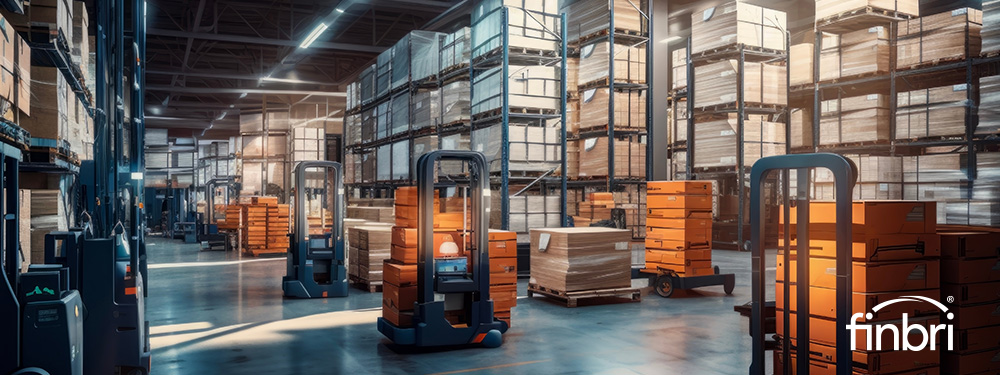
Technology and IT Equipment Finance
Computers, servers, software licenses, and other IT infrastructure critical for modern businesses can be financed to manage cash flow and stay up-to-date with the latest technology.

Office Furniture and Equipment Finance
Items such as desks, chairs, office cubicles, and even security systems can be financed to set up or upgrade an office environment.
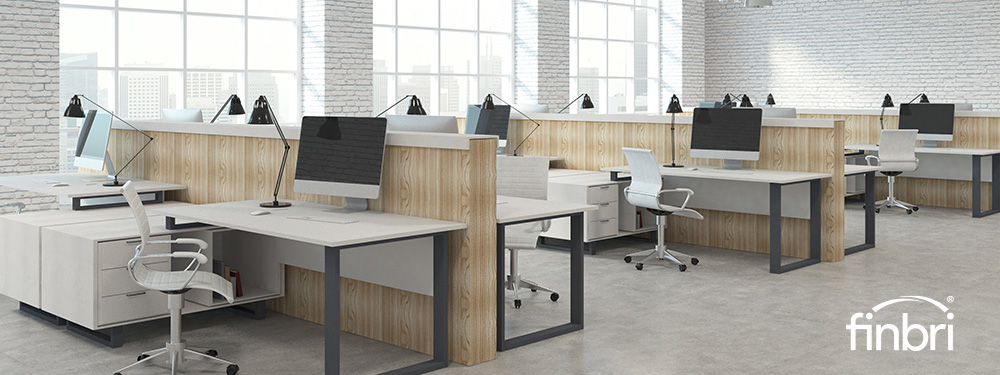
Healthcare Equipment Finance
Healthcare providers often finance medical, dental, and diagnostic equipment such as PET/CT scanners, MRI scanners, or X-ray machines, which can be very expensive, to provide state-of-the-art care without bearing the total cost upfront.
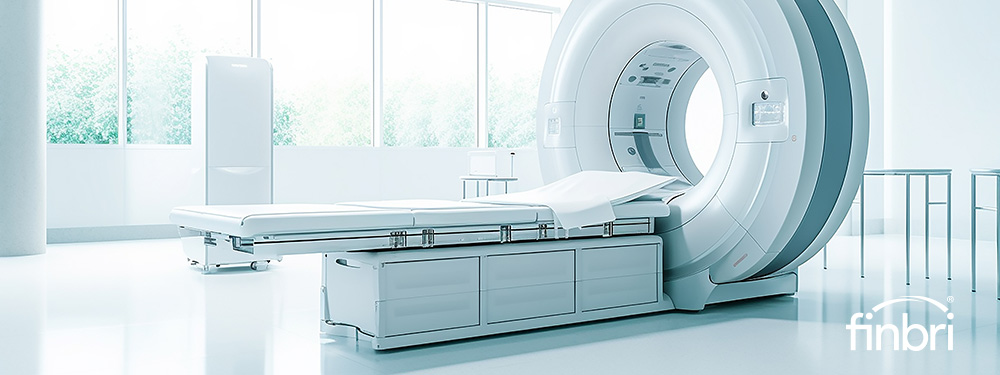
Aircraft and Marine Finance
Airlines, shipping companies, and even private individuals can finance aeroplanes, private jets, yachts, boats, and ships through specialised leasing and financing arrangements.

Renewable Energy Finance
Solar panels, wind turbines, and other renewable energy equipment, including energy battery storage, can be funded with Renewable Energy Finance to make sustainable solutions more accessible.
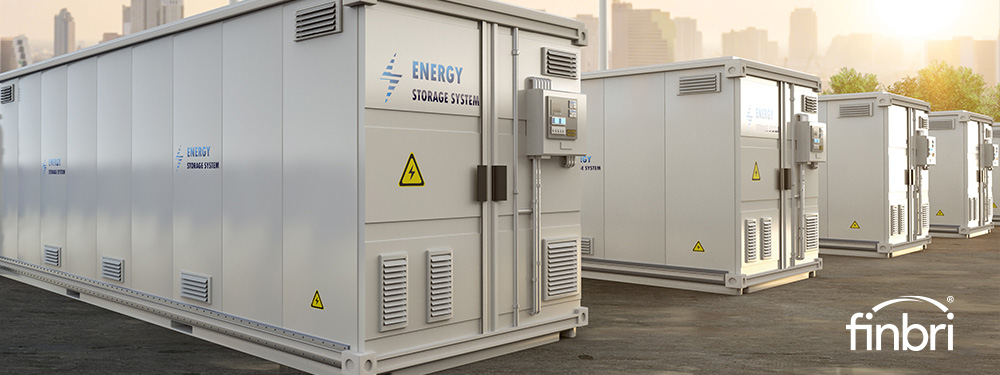
Hospitality and Retail Equipment Finance
Commercial kitchen equipment, point of sale (POS) systems, and retail fixtures can be financed to support operations in these sectors.

Fitness and Recreational Equipment Finance
Gyms and recreational facilities often finance exercise machines, pools, and other sports equipment.
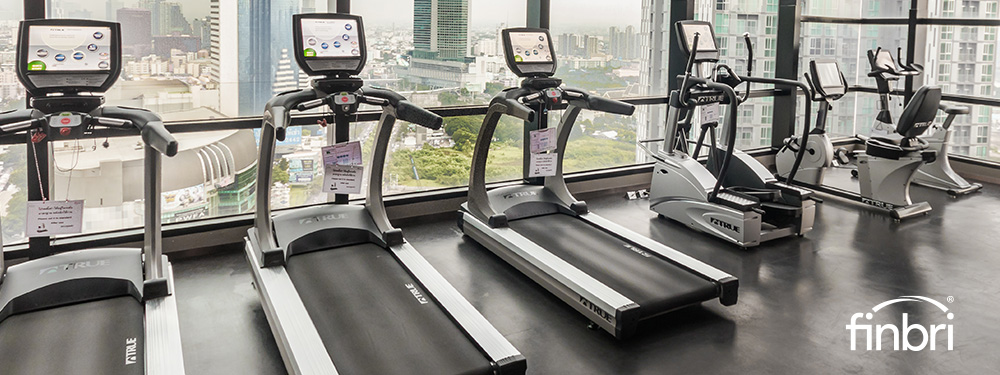
Soft Asset Finance
Although harder to finance, non-physical assets such as software, patents, or copyrights can also be financed, though the terms and structures may differ from those for tangible assets.
The ability to finance these assets allows businesses to preserve their working capital and maintain liquidity, while individuals can access items that might otherwise be unaffordable if paid for outright. The specific assets eligible for financing and the terms of such financing can vary significantly depending on the lender, the asset's nature, and the borrower's financial standing.
Who can use Asset Finance?
Asset finance can be wise for business owners who need to acquire essential equipment but lack the immediate funds for direct purchase. Asset finance is available to businesses and organisations of all sizes, from small SMEs to large corporations. Businesses commonly use it to acquire tangible assets such as plant, equipment, machinery, vehicles and technology. It's heavily used in asset-rich companies such as those offering plant or vehicles.
Businesses and organisations that use Asset Finance in the UK typically include:
- Farms and Agricultural businesses, including vertical farms
- Vehicle and rental and hire companies
- Distribution centres and warehousing companies
- Local authorities and government
What does Asset Finance cost?
The cost of asset leasing varies widely depending on several factors, including the type of lease, the asset being leased, the lease term, the value of the asset, the lessee's creditworthiness, and the specific terms agreed upon in the lease contract.
Lease Payments, Interest Rate or Finance Charges, Initial Deposit, Residual Value, Maintenance and Service Fees and Penalties for Early Termination or Excess Wear are the primary components that contribute to the cost of asset leasing.
Lease Payments
These are regular payments made by the lessee to the lessor for the use of the asset. The payments are typically fixed and calculated based on the asset's value, the lease duration, residual value at the end of the lease term, and the interest rate or finance charges the lessor applies.
Interest Rate or Finance Charges
Leasing companies usually include interest or finance charges in the lease payments to compensate for the cost of capital and the risk associated with the lease. The rate can be influenced by market conditions and the lessee’s credit profile. Rates typically vary between 3% and 15%. Interest can come as fixed-rate or variable.
Fixed-rate ASSET FINANCE agreements.
Each payment is for interest and a reduced capital amount outstanding. The interest portion of the payments is typically greater at the beginning of the agreement. The interest rate is fixed and will not change throughout the agreement.
Variable rate ASSET FINANCE agreements.
Two options are typically available: Fully variable and flexible-term (flexiterm).
- Fully variable. Your payment is for capital. Interest is charged separately at the variable rate agreed (usually calculated at a percentage above the Bank of England base rate from time to time, Subject to a minimum rate of 0%) against the day-to-day outstanding balance.
- Flexiterm. You pay fixed instalments of capital plus estimated interest. Any difference between estimated and actual interest (usually calculated at the rate agreed to be a percentage above the Bank of England base rate from time to time subject to a minimum rate of 0%) is accommodated by adjusting the period of the agreement (or the amount of last payment). Once the finance agreement is in place, we will send you a VAT invoice and a copy of the signed agreement. You should keep this safe.
Rental payments can either be on a fixed or variable interest basis.
• Fixed interest. Rental payments are fixed for the lease period and are not influenced by changes in the Bank of England base rate or any other reference base rate. The interest element of the payments will usually be greater at the beginning of the agreement.
• Variable interest. Rental payments are usually calculated based on an assumed Bank of England base rate and are held at the same level throughout the lease period. Quarterly adjustments are made depending on changes to the difference between the actual and assumed Bank of England base rate.
If the base rate is higher than the assumed rate in the previous quarter, you will need to make an additional payment. If it is lower, most likely, you'll receive a rebate for rental payments from your lender, and if the amount is less than a minimum, it might be rolled over until the next adjustment date.
Adjustments are calculated against the “Notional Capital Outstanding” – similar to the outstanding balance- using the original assumed base rate. The lease agreement sets this out in more detail.
Initial Deposit
Some leases require an initial deposit or down payment, a percentage of the asset's total value paid upfront. This reduces the total amount financed through the lease and can lower the regular lease payments.
Residual Value
For some types of leases, particularly finance leases or hire purchases with balloon payments, the lessee may have to make a significant final payment if they wish to purchase the asset at the end of the lease term. This payment is based on the projected residual value of the asset.
Maintenance and Service Fees
Depending on the lease agreement, the lessee may be responsible for the leased asset's maintenance, repairs, and service costs. In some operating leases, the lessor may cover these expenses.
Taxes and Insurance
Lessees are typically responsible for paying taxes and insurance related to the leased asset, although the specifics can vary based on the lease agreement.
Penalties for Early Termination or Excess Wear
Lease agreements often include early termination, excess use, or wear and tear terms. Lessees may incur additional costs if they terminate the lease early, exceed mileage limits (for vehicles), or return the asset in a condition worse than normal wear and tear.
To get a quote on the total cost of leasing an asset, contact our team today, who will negotiate terms to ensure the best possible deal for you.
Read your Asset Finance agreement carefully before signing it
You should carefully consider the agreement to understand your rights and obligations. We strongly recommend seeking independent legal advice if you doubt your rights, obligations, or any aspect of your credit agreement under the agreement.
Can my Assets be repossessed?
Assets can be repossessed when default on payments, breach of contract, insolvency, voluntary surrender, or end-of-lease non-compliance occurs.
Asset finance is a type of financing where assets are used as collateral for loans. This can include many assets, from vehicles and machinery to commercial equipment and property. The specifics can vary depending on the type of asset finance agreement, such as hire purchase, finance lease, operating lease, or equipment leasing, among others. Here are some general circumstances under which assets can be repossessed:
Default on Payments
The most common reason for repossession is when the borrower defaults on their payments. The lender can take back the asset if the borrower fails to make the agreed-upon payments.
Breach of Contract
Any other breach of the contract terms, including non-payment, can lead to repossession. This includes failing to insure or maintain the asset properly, using the asset for unauthorised purposes, or attempting to sell or modify the asset without the lender's permission.
Insolvency
If the borrowing entity becomes insolvent or goes into administration, the lender may repossess the assets to recover the outstanding loan amount.
Voluntary Surrender
Sometimes, the borrower may voluntarily surrender the asset if they cannot continue making payments. While this is still a form of repossession, it's initiated by the borrower rather than the lender.
End of Lease Non-compliance
For certain types of leases, such as operating leases or finance leases, failure to comply with the terms at the end of the lease (e.g., returning the asset in a condition that does not meet the agreed-upon standards) can lead to additional financial penalties or repossession.
The exact process and legal requirements for repossession vary by country. Lenders are usually required to follow specific legal procedures, including providing notice to the borrower, obtaining a court order, or both. Borrowers need to understand the terms of their financing agreement and the potential consequences of failing to meet those terms.
What responsibilities and obligations will I likely have with Asset Finance?
As the lessee, you'll have certain responsibilities and obligations to the lender when fulfilling your side of the agreement. You must look after the assets and ensure the interest of the Lender as the legal owner is protected. This typically includes (but is not limited to):
- Keeping the assets insured fully and adequately while adhering to the insurance policy terms.
- Ensuring the Lender is listed as noted (or as a joint insured, if necessary) on the insurance policy.
- Performing maintenance on the assets according to the manufacturer's guidelines.
- Retain control over the assets, except when the Lender has granted permission otherwise.
- Avoiding the imposition of any encumbrances on the assets or letting any third parties acquire rights over them.
- Complying with all legal and regulatory obligations related to the assets.
- Maintaining the assets in a good repair state allows for normal wear and tear.
- Keep the assets in the UK unless the lender permits otherwise.
- Not making material alterations to the assets unless the Lender permits otherwise.
What are the alternatives to asset finance?
Alternatives to asset finance offer different ways to acquire or use a tractor without committing to a traditional finance agreement. These alternatives can provide flexibility, potentially lower costs, or different ownership structures that might better suit certain businesses or individual needs. Here are some notable alternatives:
Outright Purchase. Using existing capital to buy a tractor outright eliminates interest payments and finance-related fees, immediately giving the buyer full ownership. This option is ideal for those with sufficient cash reserves who prefer not to have monthly payments. For those with savings set aside, using these funds for an asset purchase avoids the need for external financing. This option requires careful consideration of the impact on personal or business finances, but it is the cheapest option for owning a Tractor.
Trade-In. Trading in an older asset model as part of the payment for a new one can reduce the overall cost. Dealers commonly offer this option and can simplify the transition to a newer model.
Rental. Renting an asset for a specific period or seasonal work can be a practical solution for those with occasional needs. It avoids long-term financial commitments and is ideal for short-term projects or peak season requirements.
Bridging Loans. For business owners who need urgent short-term finance and own land or property, a bridging loan can help acquire an asset. Bridging loans can be arranged in as little as 3 working days and used to purchase any type of equipment.
Each alternative has advantages and considerations, ranging from the total cost and flexibility to the impact on cash flow and tax implications. Evaluating each option carefully, considering both short-term needs and long-term financial health, is essential before deciding the best way to acquire an asset for your business operations.
Final thoughts
In conclusion, the 2024 Asset Finance Guide is a roadmap for businesses accessing necessary equipment, machinery, plant and technology through the various flexible forms of asset finance. By elucidating the nuances of each asset finance option, including Hire Purchase, Hire Purchase with Balloon Payment, Finance Lease, Operating Lease and Residual Value-Based Leasing (RVBL), we aim to empower businesses to make informed decisions that align with their operational requirements and financial strategies. Practical examples and detailed analysis highlight how asset finance can facilitate growth by enabling immediate access to critical assets while managing cash flow effectively. Whether seeking to invest in vehicles, technology, machinery, or other valuable assets, companies now have the insights to leverage asset finance as a strategic tool for sustainable development, ensuring they remain competitive and agile in the UK's dynamic economic landscape.
We're financial experts who arrange market-leading asset finance for businesses in the UK.
Call our friendly team 01202 612934, we're ready to help.
